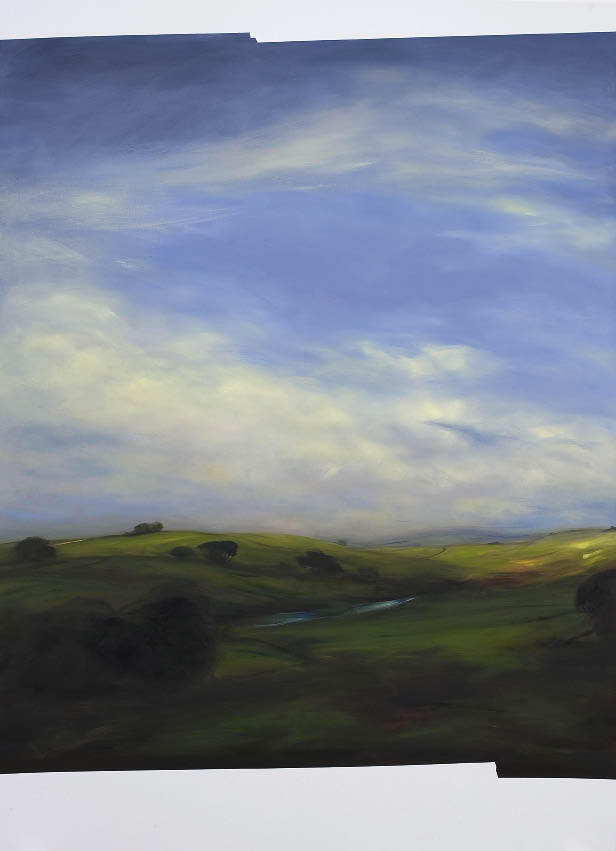An encounter with the paintings by the established Berlin-based Swede Peter Frie comes as a breath of fresh and insightful air to the British contemporary art scene. The dozen or so works (large-scale oil landscapes and a few still-lives) are displayed in stunning contemporary settings: a glass gallery and an adjacent artists’ house at Roche Court (a period house with grounds, better known for its sculpture programme).
Landscape painting has not fared well within the dictates of modernist and post-modernist art definitions. It is as if an urban-centric, text-driven and often anti-aesthetic dogma has stifled both alternative discourse and individual human expression. Yet our experience of landscape, and by association Nature, is fundamental to the development of our senses, perceptual vocabulary and cognitive awareness.
The essence of things accords with the essence of ourselves. Nineteenth-century theorists were particularly interested in the concept of ‘correspondences’ and the emotionally charged idea that the natural and spiritual worlds could be interpreted as two parts of one whole. Such beliefs have a long and varied lineage in North European art and literature. We can see the currency of two influential art theorists, and their seminal publications, in Frie’s paintings: the German Gustav Carus’s Nine Letters on Landscape Painting (1815–24) and the numerous polemical writings of the Swede Richard Bergh. Both were also accomplished artists in their own right.
Frie has talked about his works as being the outcome of memory-based experiences which include both autobiographic associations of landscape with childhood (in this instance a sense of both happiness and loss, in relation to the artist’s mother) and an extensive knowledge of landscape art: a list that would include the Scandinavians Johann Christian Dahl and Prins Eugen, Nordic mood pictures, the Dutch Masters such as Ruysdael, and Gainsborough and Constable. In relation to the role of an artist’s own nature, Richard Bergh wrote that ‘instinctively, the evocative/emotional painter seeks out a light, an atmosphere, a landscape which he may invest with a spirit possessing the sufferings and joys of his own soul, its light and dark dreams’.
Frie’s paintings appear strangely familiar to us and yet they are not a portrayal of a given place, least of all a Scandinavian landscape. A pivotal note is struck by Frie’s focus on a range of greens: the most difficult colour for artists to use successfully. Not surprisingly, British viewers feel at home, with suggestive undulating fields, hillocks and sturdy windswept oak trees. The winding pathways and rivulets, picked out in spectrally bright colours, and the dominant cloud-filled skies articulate both a sense of space, suggestive of physical engagement with the landscape, and a dissonant mood. The decision to leave the works unframed (as objects) and the use of ‘blank’ white space, above and below the painted surface, is one solution to how an artist engages with our contemporary complexities of technology-enhanced vision and recollection. It is as if we are presented with a fragment of time, somewhere between late afternoon and early evening in the summer. Yet Frie’s deft handling of brushwork and suffusion of forms is there to confound the one-glance-and-you’ve-seen-it experience.
Viewing Frie’s works we are reminded that for the contemporary artist the composing of a landscape picture can be a complex, instinctive and associative process, where the sought-after outcome is a visual dialogue of engagement. Bergh stressed that ‘a painting should immediately awaken a mood of sensitivity that builds a bridge between the work of art and us’. Far from being irrelevant, landscape painting is the most vital of arts.







Comments